I Ching Nei Kung
The practices described in the I Ching have resulted through an observation of nature at the deepest and subtlest level, so they are not ideas or inventions of a human mind, but natural processes that are not caused by us but happen anyway within us and around us, giving us life, form, growth, euphoria and healing. In short, these processes are so important for our Being that without them, life is impossible.
In iching.cloud, the system of inner practices described in I Ching is called I Ching nei kung, where nei kung means inner practice. I Ching nei kung is created by following letter by letter, line by line, hexagram by hexagram, exclusively the information provided by the ancient text, avoiding strictly any vagueness in its interpretation. Of great importance here is the hou tien pa kua, as it is an energy map of the human body, supporting thus the practices to work in the most efficient way.
There are eight practices that each corresponds to one of the eight trigrams and for each trigam there is a family of eight hexagrams that describe the corresponding practice. These eight practices don't work independently, but they support each other in a sequence. The successful completion of each practice builds the foundation for the next one. It is important to note that I Ching provides only the absolutely neccessary information for each practice. For example it is not mentioned if a practice must be done in a standing, sitting or lying position, as this is not considered important. Focusing only on the essential to keep each practice effective but simple, is the key to facilitate the advacement of the practicioner in a more effortless way. After all, the name I Ching can be translated as Book of Changes, but also as Book of Easiness.
The practice of ☴ Shun
I Ching nei kung was conceived as an idea (and as a reality) in 2006, but it took almost twenty years for research and testing of the practices in order to be ready to be given in workshops.
The first practice of I Ching nei kung is the first yin practice, corresponding thus to the first yin trigram, ☴ Shun. This practice is similar to the UHTS practices of Inner Smile and Fusion. It also includes the function of Te and the cauldron Ding. Through the wisdom of the I Ching these practices are simple to understand and to practice, though more effective. The duration of each workshop is eight hours, and it includes two books, one of the practice, and a dictionary with all the taoist inner alchemy terms analysed in detail.
It is a prerequisite to attend a workshop of the ☴ Shun practice in order to attend a workshop of the next ☵ Kan practice, and so on. It is also advised to practice at least six months or more each practice, before you move to the next.
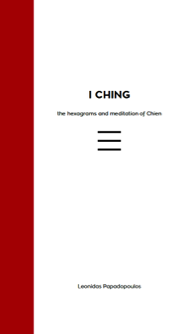
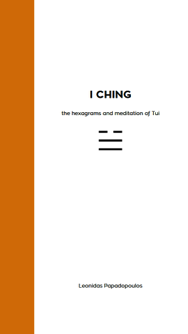
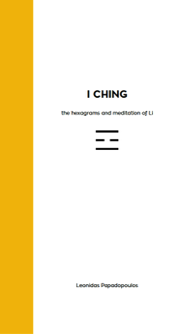
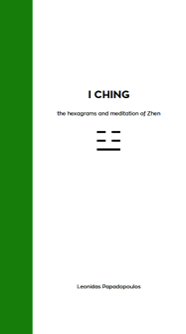
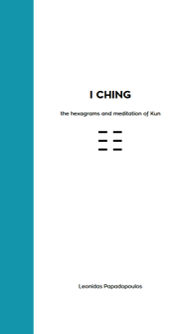
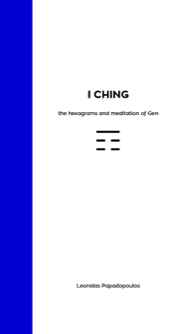
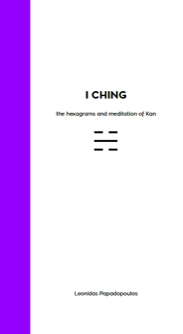
"Following the Tao" is a dictionary of chinese terms used in taoist inner practices. All ideograms are analysed line by line revealing the image behind them, thus making them better understood. It also includes a detailed analysis of the hsien tien pa kua's construction and development. Available in paperback and pdf. Included in the price of a workshop.
"Following the Tao" is an analytic interpretation of chinese characters regarding taoist spiritual cultivation that was missing, at least to that extent. Leonidas' analysis is an inspiring tool for our practice, as it gives us a deeper understanding of the words we use to describe it."
Mantak Chia
The I Ching nei kung practices' books are available only as part of the corresponding course.
Each book has two parts. The first part contains a groundbreaking interpretation for the eight hexagrams of the corresponding practice, analysing the ideograms of the text in detail, comparing them with their ancient writing and with more ancient versions of the I Ching found in recent excavations. The second part of each book describes the corresponding meditation also explained hexagram by hexagram. Wherever appicable, comparison to other spiritual traditions is referred, for verification and inspiration.
The first book concerning the first yin practice of ☴ Shun, contains also a full analysis of the I Ching, with a brief history, trigram attributes, hsien tien pa kua developement and divination guidance, information which is not repeated in the rest of the books.
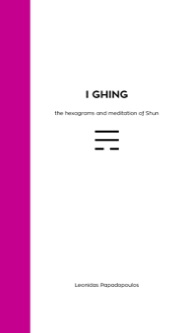
Books

Courses
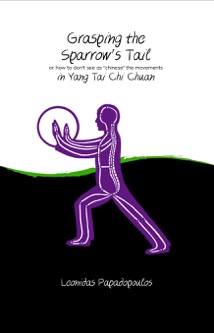

Two dictionary books analysing the names of all the movements in the long forms of Yang and Wu style Tai Chi chuan.
In the end of the books, drawings with all the movements in their sequence are included. The Yang book's drawings depict Yang Cheng Fu practicing the postures.
